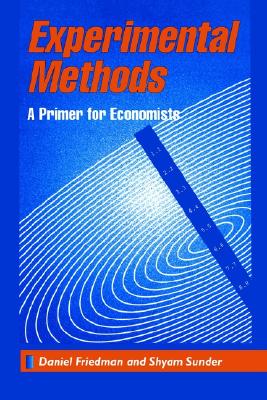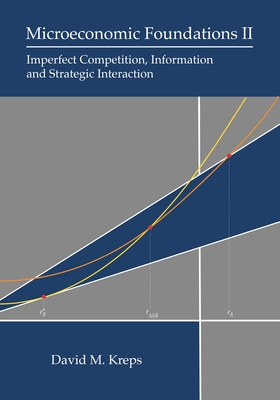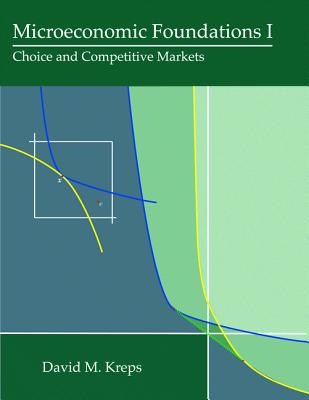图书简介
Provides a concise overview of the core undergraduate physics and applied mathematics curriculum for students and practitioners of science and engineering Fundamental Math and Physics for Scientists and Engineers summarizes college and university level ph
1 Introduction 1 2 Problem Solving 3 2.1 Analysis 3 2.2 Test-Taking Techniques 4 2.2.1 Dimensional Analysis 5 3 Scientific Programming 6 3.1 Language Fundamentals 6 3.1.1 Octave Programming 7 4 Elementary Mathematics 12 4.1 Algebra 12 4.1.1 Equation Manipulation 12 4.1.2 Linear Equation Systems 13 4.1.3 Factoring 14 4.1.4 Inequalities 15 4.1.5 Sum Formulas 16 4.1.6 Binomial Theorem 17 4.2 Geometry 17 4.2.1 Angles 18 4.2.2 Triangles 18 4.2.3 Right Triangles 19 4.2.4 Polygons 20 4.2.5 Circles 20 4.3 Exponential, Logarithmic Functions, and Trigonometry 21 4.3.1 Exponential Functions 21 4.3.2 Inverse Functions and Logarithms 21 4.3.3 Hyperbolic Functions 22 4.3.4 Complex Numbers and Harmonic Functions 23 4.3.5 Inverse Harmonic and Hyperbolic Functions 25 4.3.6 Trigonometric Identities 26 4.4 Analytic Geometry 28 4.4.1 Lines and Planes 28 4.4.2 Conic Sections 29 4.4.3 Areas, Volumes, and Solid Angles 31 5 Vectors and Matrices 32 5.1 Matrices and Matrix Products 32 5.2 Equation Systems 34 5.3 Traces and Determinants 35 5.4 Vectors and Inner Products 38 5.5 Cross and Outer Products 40 5.6 Vector Identities 41 5.7 Rotations and Orthogonal Matrices 42 5.8 Groups and Matrix Generators 43 5.9 Eigenvalues and Eigenvectors 45 5.10 Similarity Transformations 48 6 Calculus of a Single Variable 50 6.1 Derivatives 50 6.2 Integrals 54 6.3 Series 60 7 Calculus of Several Variables 62 7.1 Partial Derivatives 62 7.2 Multidimensional Taylor Series and Extrema 66 7.3 Multiple Integration 67 7.4 Volumes and Surfaces of Revolution 69 7.5 Change of Variables and Jacobians 70 8 Calculus of Vector Functions 72 8.1 Generalized Coordinates 72 8.2 Vector Differential Operators 77 8.3 Vector Differential Identities 81 8.4 Gauss s and Stokes Laws and Green s Identities 82 8.5 Lagrange Multipliers 83 9 Probability Theory and Statistics 85 9.1 Random Variables, Probability Density, and Distributions 85 9.2 Mean, Variance, and Standard Deviation 86 9.3 Variable Transformations 86 9.4 Moments and Moment-Generating Function 86 9.5 Multivariate Probability Distributions, Covariance, and Correlation 87 9.6 Gaussian, Binomial, and Poisson Distributions 87 9.7 Least Squares Regression 91 9.8 Error Propagation 92 9.9 Numerical Models 93 10 Complex Analysis 94 10.1 Functions of a Complex Variable 94 10.2 Derivatives, Analyticity, and the Cauchy Riemann Relations 95 10.3 Conformal Mapping 96 10.4 Cauchy s Theorem and Taylor and Laurent Series 97 10.5 Residue Theorem 101 10.6 Dispersion Relations 105 10.7 Method of Steepest Decent 106 11 Differential Equations 108 11.1 Linearity, Superposition, and Initial and Boundary Values 108 11.2 Numerical Solutions 109 11.3 First-Order Differential Equations 112 11.4 Wronskian 114 11.5 Factorization 115 11.6 Method of Undetermined Coefficients 115 11.7 Variation of Parameters 116 11.8 Reduction of Order 118 11.9 Series Solution and Method of Frobenius 118 11.10 Systems of Equations, Eigenvalues, and Eigenvectors 119 12 Transform Theory 122 12.1 Eigenfunctions and Eigenvectors 122 12.2 Sturm Liouville Theory 123 12.3 Fourier Series 125 12.4 Fourier Transforms 127 12.5 Delta Functions 128 12.6 Green s Functions 131 12.7 Laplace Transforms 135 12.8 z-Transforms 137 13 Partial Differential Equations and Special Functions 138 13.1 Separation of Variables and Rectangular Coordinates 138 13.2 Legendre Polynomials 145 13.3 Spherical Harmonics 150 13.4 Bessel Functions 156 13.5 Spherical Bessel Functions 162 14 Integral Equations and the Calculus of Variations 166 14.1 Volterra and Fredholm Equations 166 14.2 Calculus of Variations the Euler-Lagrange Equation 168 15 Particle Mechanics 170 15.1 Newton s Laws 170 15.2 Forces 171 15.3 Numerical Methods 173 15.4 Work and Energy 174 15.5 Lagrange Equations 176 15.6 Three-Dimensional Particle Motion 180 15.7 Impulse 181 15.8 Oscillatory Motion 181 15.9 Rotational Motion About a Fixed Axis 185 15.10 Torque and Angular Momentum 187 15.11 Motion in Accelerating Reference Systems 188 15.12 Gravitational Forces and Fields 189 15.13 Celestial Mechanics 191 15.14 Dynamics of Systems of Particles 193 15.15 Two-Particle Collisions and Scattering 197 15.16 Mechanics of Rigid Bodies 199 15.17 Hamilton s Equation and Kinematics 206 16 Fluid Mechanics 210 16.1 Continuity Equation 210 16.2 Euler s Equation 212 16.3 Bernoulli s Equation 213 17 Special Relativity 215 17.1 Four-Vectors and Lorentz Transformation 215 17.2 Length Contraction, Time Dilation, and Simultaneity 217 17.3 Covariant Notation 219 17.4 Casuality and Minkowski Diagrams 221 17.5 Velocity Addition and Doppler Shift 222 17.6 Energy and Momentum 223 18 Electromagnetism 227 18.1 Maxwell s Equations 227 18.2 Gauss s Law 233 18.3 Electric Potential 235 18.4 Current and Resistivity 238 18.5 Dipoles and Polarization 241 18.6 Boundary Conditions and Green s Functions 244 18.7 Multipole Expansion 248 18.8 Relativistic Formulation of Electromagnetism, Gauge Transformations, and Magnetic Fields 249 18.9 Magnetostatics 256 18.10 Magnetic Dipoles 259 18.11 Magnetization 260 18.12 Induction and Faraday s Law 262 18.13 Circuit Theory and Kirchoff s Laws 266 18.14 Conservation Laws and the Stress Tensor 270 18.15 Lienard Wiechert Potentials 274 18.16 Radiation from Moving Charges 275 19 Wave Motion 282 19.1 Wave Equation 282 19.2 Propagation of Waves 284 19.3 Planar Electromagnetic Waves 286 19.4 Polarization 287 19.5 Superposition and Interference 288 19.6 Multipole Expansion for Radiating Fields 292 19.7 Phase and Group Velocity 295 19.8 Minimum Time Principle and Ray Optics 296 19.9 Refraction and Snell s Law 297 19.10 Lenses 299 19.11 Mechanical Reflection 301 19.12 Doppler Effect and Shock Waves 302 19.13 Waves in Periodic Media 303 19.14 Conducting Media 304 19.15 Dielectric Media 306 19.16 Reflection and Transmission 307 19.17 Diffraction 311 19.18 Waveguides and Cavities 313 20 Quantum Mechanics 318 20.1 Fundamental Principles 318 20.2 Particle Wave Duality 319 20.3 Interference of Quantum Waves 320 20.4 Schrodinger Equation 321 20.5 Particle Flux and Reflection 322 20.6 Wave Packet Propagation 324 20.7 Numerical Solutions 326 20.8 Quantum Mechanical Operators 328 20.9 Heisenberg Uncertainty Relation 331 20.10 Hilbert Space Representation 334 20.11 Square Well and Delta Function Potentials 336 20.12 WKB Method 339 20.13 Harmonic Oscillators 342 20.14 Heisenberg Representation 343 20.15 Translation Operators 344 20.16 Perturbation Theory 345 20.17 Adiabatic Theorem 351 21 Atomic Physics 353 21.1 Properties of Fermions 353 21.2 Bohr Model 354 21.3 Atomic Spectra and X-Rays 356 21.4 Atomic Units 356 21.5 Angular Momentum 357 21.6 Spin 358 21.7 Interaction of Spins 359 21.8 Hydrogenic Atoms 360 21.9 Atomic Structure 362 21.10 Spin Orbit Coupling 362 21.11 Atoms in Static Electric and Magnetic Fields 364 21.12 Helium Atom and the H+ 2 Molecule 368 21.13 Interaction of Atoms with Radiation 371 21.14 Selection Rules 373 21.15 Scattering Theory 374 22 Nuclear and Particle Physics 379 22.1 Nuclear Properties 379 22.2 Radioactive Decay 381 22.3 Nuclear Reactions 382 22.4 Fission and Fusion 383 22.5 Fundamental Properties of Elementary Particles 383 23 Thermodynamics and Statistical Mechanics 386 23.1 Entropy 386 23.2 Ensembles 388 23.3 Statistics 391 23.4 Partition Functions 393 23.5 Density of States 396 23.6 Temperature and Energy 397 23.7 Phonons and Photons 400 23.8 The Laws of Thermodynamics 401 23.9 The Legendre Transformation and Thermodynamic Quantities 403 23.10 Expansion of Gases 407 23.11 Heat Engines and the Carnot Cycle 409 23.12 Thermodynamic Fluctuations 410 23.13 Phase Transformations 412 23.14 The Chemical Potential and Chemical Reactions 413 23.15 The Fermi Gas 414 23.16 Bose Einstein Condensation 416 23.17 Physical Kinetics and Transport Theory 417 24 Condensed Matter Physics 422 24.1 Crystal Structure 422 24.2 X-Ray Diffraction 423 24.3 Thermal Properties 424 24.4 Electron Theory of Metals 425 24.5 Superconductors 426 24.6 Semiconductors 427 25 Laboratory Methods 430 25.1 Interaction of Particles with Matter 430 25.2 Radiation Detection and Counting Statistics 431 25.3 Lasers 432 Index 434
Trade Policy 买家须知
- 关于产品:
- ● 正版保障:本网站隶属于中国国际图书贸易集团公司,确保所有图书都是100%正版。
- ● 环保纸张:进口图书大多使用的都是环保轻型张,颜色偏黄,重量比较轻。
- ● 毛边版:即书翻页的地方,故意做成了参差不齐的样子,一般为精装版,更具收藏价值。
关于退换货:- 由于预订产品的特殊性,采购订单正式发订后,买方不得无故取消全部或部分产品的订购。
- 由于进口图书的特殊性,发生以下情况的,请直接拒收货物,由快递返回:
- ● 外包装破损/发错货/少发货/图书外观破损/图书配件不全(例如:光盘等)
并请在工作日通过电话400-008-1110联系我们。
- 签收后,如发生以下情况,请在签收后的5个工作日内联系客服办理退换货:
- ● 缺页/错页/错印/脱线
关于发货时间:- 一般情况下:
- ●【现货】 下单后48小时内由北京(库房)发出快递。
- ●【预订】【预售】下单后国外发货,到货时间预计5-8周左右,店铺默认中通快递,如需顺丰快递邮费到付。
- ● 需要开具发票的客户,发货时间可能在上述基础上再延后1-2个工作日(紧急发票需求,请联系010-68433105/3213);
- ● 如遇其他特殊原因,对发货时间有影响的,我们会第一时间在网站公告,敬请留意。
关于到货时间:- 由于进口图书入境入库后,都是委托第三方快递发货,所以我们只能保证在规定时间内发出,但无法为您保证确切的到货时间。
- ● 主要城市一般2-4天
- ● 偏远地区一般4-7天
关于接听咨询电话的时间:- 010-68433105/3213正常接听咨询电话的时间为:周一至周五上午8:30~下午5:00,周六、日及法定节假日休息,将无法接听来电,敬请谅解。
- 其它时间您也可以通过邮件联系我们:customer@readgo.cn,工作日会优先处理。
关于快递:- ● 已付款订单:主要由中通、宅急送负责派送,订单进度查询请拨打010-68433105/3213。
本书暂无推荐
本书暂无推荐















